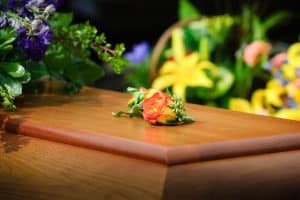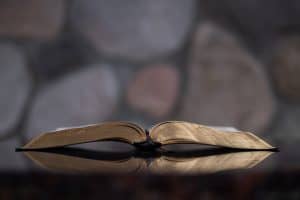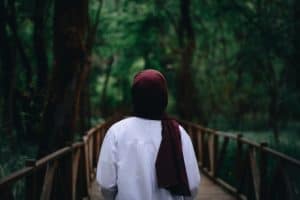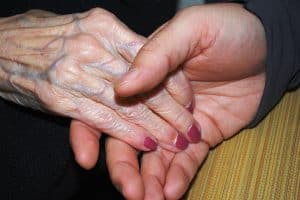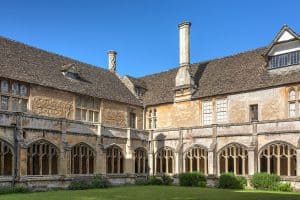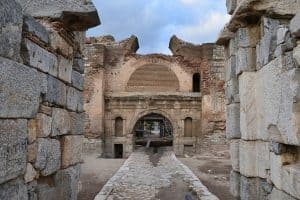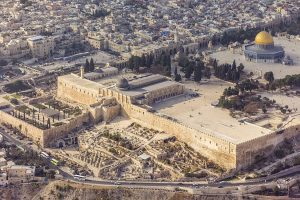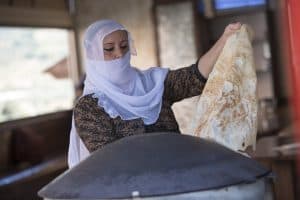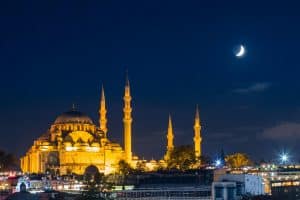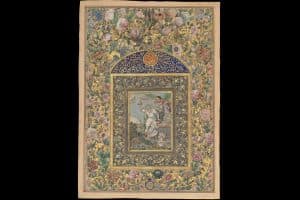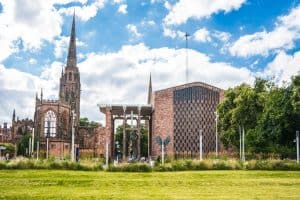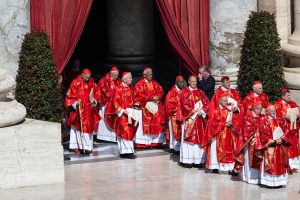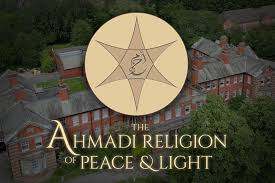By Brian Casey
The Roman Catholic Church is the largest Christian church and religious domination in the world. It is the oldest continuous institution, with 1.2 billion people baptised into the faith. It teaches that it was founded by Jesus Christ and is the ‘one true church’
The history of the church
The Roman Catholic Church gained acceptance in the early fourth century under Emperor Constantine, soon becoming one of the most dominant and powerful influences in western civilisation from late antiquity to the modern age. It became a patron and sponsor of Romanesque, Renaissance, gothic, mannerist and baroque styles of architecture, art and music with some of the most distinguished practitioners of each style being supported by the church.
The head of the church is the Pope and he holds a variety of titles, including Supreme Pontiff and Bishop of Rome. He is elected by the College of Cardinals in a procedure established in the 11th century.
An east-west schism in the 11th century led to the emergence of what is now the Orthodox Church. From 1309 to 1376 seven Popes were based in Avignon for safety and at one point, from 1378 to 1417, there were three Popes at the same time.
Reformation and Counter-Reformation
The most profound tensions in the church emerged in the mid-15th century in what became known as the Reformation, when disgruntled members broke away and formed their own religions under the umbrella of Protestantism.
The best-known was the German Augustinian monk, Martin Luther, who nailed 95 theses to the door of Wittenberg Cathedral in 1517, in protest against the corruption he witnessed in the church, particularly simony (the sale of church offices and privileges) and plenary indulgences (official church pardons for sins, often granted in return for money or other services).
A cascade of others followed across Europe, including John Calvin and Ulrich Zwingli seeking to break away from Rome. The church sought to push back through the Counter-Reformation, also known as the Catholic Reformation, in an effort to stymie the spread of Protestantism, mostly through the recommendations of the Council of Trent of 1545-63.
However, this did not stop frequent and firm criticisms of the church from the Enlightenment, the 18th-century philosophical movement stressing reason and the critical reappraisal of ideas and social institutions. Anti-Catholic sentiment became strong during the French Revolution from 1789 and many church institutions were destroyed, although a Catholic revival followed the end of the Napoleonic Wars in 1815. Anti-Catholic views remained prominent into the 20th century with criticisms continuing today over its teachings on contraception, abortion, homosexuality, married priests, female priests, and being out of step with contemporary society and the needs of the faithful.
Structure and governance
The fundamental teaching of the church is that it is the one “holy, catholic and apostolic church” founded by Jesus Christ with the Pope the successor to St Peter, the first Pope, and his bishops are the successors to the apostles. Its traditions are kept alive through the teaching and preaching of scripture, the magisterium — the church’s authority — and its catechism.
Twenty-four churches come under the governance of the Catholic church. Its vast geographical spread and sheer numbers mean that there are a variety of theological and spiritual emphases.
The Catholic church sees itself consisting of “the people of God”. Its governance is hierarchical with the Pope at its apex, living and working in the Vatican City, an enclave, a city state within Rome. He is assisted by cardinals and bishops.
In October 2021, the male-only presbyterate comprises 215 cardinals, 5,400 bishops, and 415,000 priests working in and running 221,700 parishes and 3,500 dioceses and eparchies (provinces). There are also 650,000 religious women — nuns — who live in convents and communities, praying for and serving the church in a variety of ways such as teaching, healthcare, chaplaincy, counselling and catechesis (religious instruction). The continued existence of a male-only priesthood limits the full participation of women in the life of the church: they are barred from celebrating all seven sacraments because they are not ordained to holy orders.
Bishops have received formal jurisdictional powers within the church, generally in charge of a geographical region known as a diocese. They are assisted by priests, who have been ordained to celebrate the sacraments and the diaconate (the office of deacon) comprises either transitional deacons (those who will be ordained priests), or permanent deacons, who assist priests in parish duties, such as attending at funerals, baptisms and preaching the gospels. Permanent deacons are often married men over 35 and generally work in a non-stipendiary capacity.
Cardinals are appointed by the Pope and are members of the College of Cardinals, where those aged under 80 can vote in papal conclaves, which is capped at 120. While any Catholic adult male can be elected Pope, since 1389, he has been elevated from the College of Cardinals. Historically, the majority tended to be Italian or European, but in response to the church’s growth outside of Europe, Pope Francis has appointed cardinals from other parts of the world, offering a much more diverse college than at any other point in its history.
The Roman Curia
The Pope is the leader of the church and is elected by the College of Cardinals after the death or resignation of his predecessor. His office is known as the papacy and he is directly served by the Roman Curia, equivalent to a government’s civil service.
While the governance of the Catholic church is decentralised to national bishops’ conferences, bishops and superiors, with an emphasis on obedience, there are a variety of structures within the Roman Curia that oversee the global church’s governance.
Its best-known institution is the Congregation for the Doctrine of the Faith, which ensures orthodoxy in the teachings and disciplines those that deviate from this. In response to the many failures to respond properly to clerical sex abuse, Pope Francis established the Pontifical Commission for the Protection of Minors that advises him on best safeguarding practices to be implemented throughout the church.
In 2014, Francis also established the Secretariat for the Economy, which oversees all economic activity of the Holy See and the Vatican in response to scandals over financial irregularities and corruption. There are a variety of congregations, dicasteries (departments) and pontifical commissions overseeing the appointment of bishops, inter-religious dialogue and the cultural patrimony of the church. There is also a significant diplomatic corps, with ambassadors known as papal nuncios an important conduit between the papacy, the local church and nation states.
Missionary activity
The Catholic church believes in evangelisation through preaching the Gospels and relying on its own dogma to expand further on this. There have been missionaries since its most ancient times. Missionary congregations were founded to work in countries where Catholicism was not dominant and with the purpose of evangelising.
The early modern period saw more pronounced missionary activity to Asia and South America taking place with varying degrees of success, with some being part of European efforts at empire-building, especially in South America where most Catholics now live. The mid-19th century saw attention turn to Africa as missionaries of all Christian denominations saw civilising virtues in spreading their faith, which continues to be controversial, especially as some Catholic missionaries were slow to defend local rights against colonial government.
By the mid-20th century, members of the local hierarchy and religious sisters began to be more vocal in speaking out against despotism and poverty in South America and Africa, especially southern Africa during the Apartheid era. Priests, bishops and religious sisters have been kidnapped, imprisoned, tortured and murdered because of their solidarity with marginalised groups.
By the mid-20th century, there was a proliferation of female religious congregations that came to run hospitals and health clinics in the global south, with newly independent governments asking them to continue the work, relying on the infrastructure that had been built with the assistance of colonial governments.
Sacraments
There are seven sacraments in Catholicism: baptism, confirmation, Eucharist, reconciliation, anointing of the sick, matrimony, and holy orders. Eucharist is the principal one, celebrated in the liturgy of the mass.
They are seen as visible rituals of God’s presence and were instituted by Christ. All the sacraments are seen to be “an encounter between Christ and the church” and the celebration of the Eucharist is central to worship and faith in Catholicism and is its most frequently celebrated sacrament.
At the consecration of the bread and wine, Catholics believe that it becomes Christ’s real presence, that is, his body and blood. This is known as transubstantiation.
Teachings and liturgies
Dogmas are an important fabric of faith in Catholicism. The church’s doctrine has developed over the centuries and it believes that it is being guided by the Holy Spirit as new theological issues are discerned. Sacred scripture and sacred tradition are its guides, interpreted by the magisterium and the catechism of the church.
For example, the church teaches that souls after death receive particular judgments from God with the final judgment marking the end of human history and a new and better heaven and earth overseen by a righteous God. There are three states of afterlife for Catholics: heaven, purgatory and final damnation. Limbo, the state where unbaptised children and non-Christians are said to be assigned, is not part of the official dogma.
Catholic social teaching places an emphasis on work with the sick and poor and many of the large number of monastic travelling orders and religious congregations focus upon this. Social teaching reflects the concerns that Jesus Christ had for the poor, placing emphasis on acts of mercy, while also promoting social justice.
It also calls for the practice of chastity, maintaining the integrity of the human person bodily and spiritually. Pope Francis’s encyclical, Laudato Si’, is about how the church needs to address the stewardship of the natural environment.
Mary is held in special regard. She is known as the Mother of God and the doctrines of the Immaculate Conception, where he was conceived without original sin and the Assumption of Mary where her body was assumed directly to Heaven following her death are infallible dogma, promulgated by Pius IX in 1854 and Pius XII in 1950.
The First Vatican Council (1868) affirmed papal infallibility that could be exercised in certain papal pronouncements. Marian devotion — that is, to Mary — is a distinctive form of piety, the most popular being Our Lady of Perpetual Help, Our Lady of Guadalupe and Our Lady of Lourdes. Our Lady of Fatima became a strong anti-communist symbol during the Cold War.
There are a variety of liturgies, known as rites, that reflect the cultural diversity of Catholicism rather than any significant differences in belief. They are captured under the umbrella terms of eastern and western rites, with the Roman rite the most common.
The Second Vatican Council (1962-65) was the most significant event within Catholicism since the Council of Trent. It was about modernising practices and worship, becoming more aligned with the modern world. This aggiornamento, or update, was described as an “opening of the windows” by some advocates.
There were significant controversies around the celebration of the sacraments in the vernacular (everyday languages rather than Latin) and Paul VI affirming the church’s opposition to artificial forms of contraception in Humanae Vitae (1968). Changing the rubrics of the mass to the vernacular saw great disagreement as a number of groups emerged that continued to celebrate the Latin Mass, known as the Tridentine Rite or Extraordinary Form in use between 1570 and 1962.
In Traditionis custodes, an apostolic letter published on 16 July 2021, Pope Francis put strong restrictions on the celebration of this rite and the same year he called upon the entire church to participate in a synod for two years of reflection and sharing. This is expected to be completed in 2023.
About the author: Dr Brian Casey is the assistant director of the Centre for Catholic Studies, part of the Department of Theology and Religion at Durham University
Further reading
The Catechism of the Catholic Church
Pope Francis’ encylical: Laudato Si’
Eamon Duffy, The Stripping of the Altars: Traditional Religion in England, 1400-1580 (1992)
Alanna Harris, Faith in the Family: A Lived Religious History of English Catholicism, 1945-82 (2015)
James Hitchcock, History of the Catholic Church: from the Apostolic Age to the Third Millennium (2012)
Barbara Mann Wall, Into Africa: A transnational History of Catholic Medical Missions and Social Change (2015)


